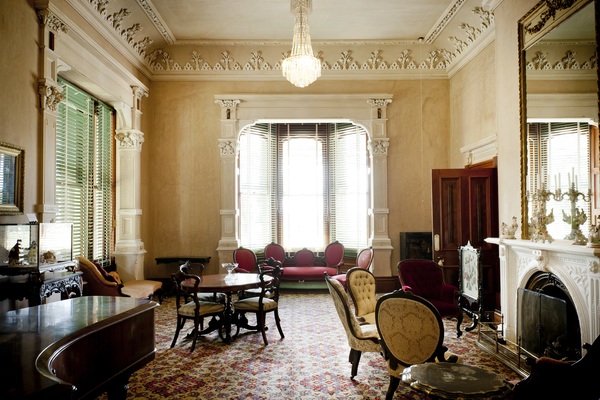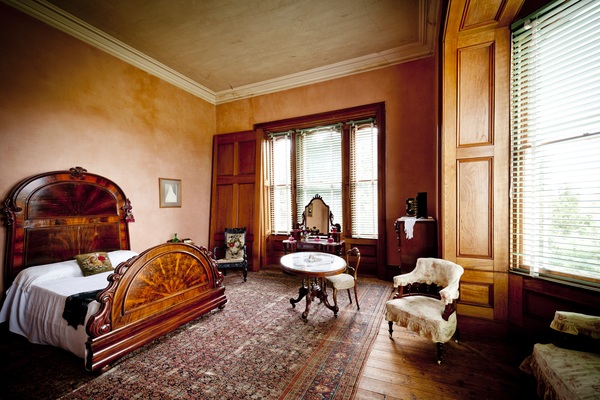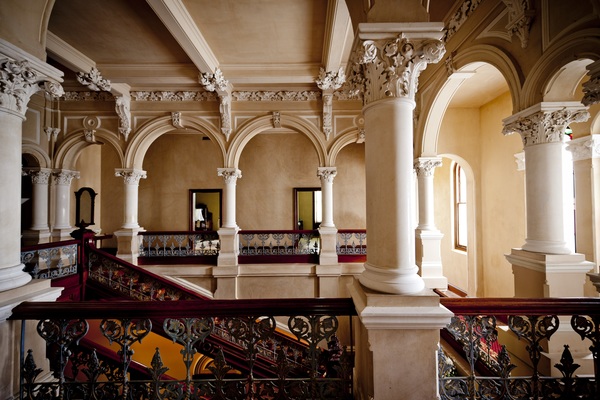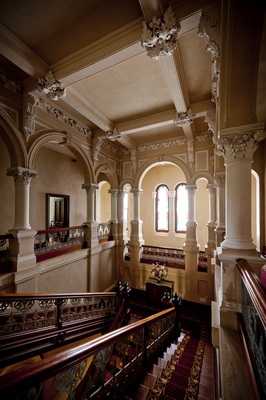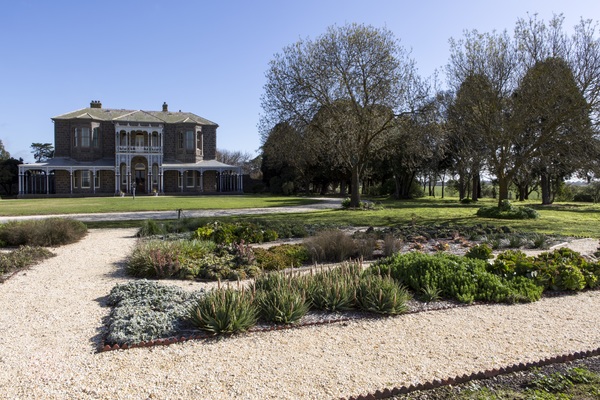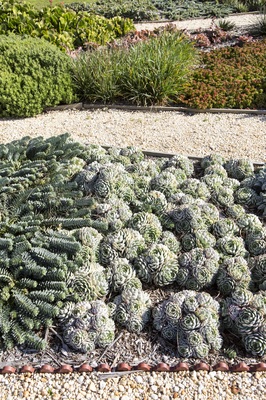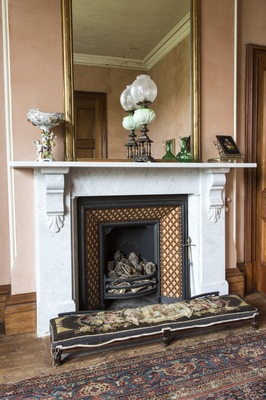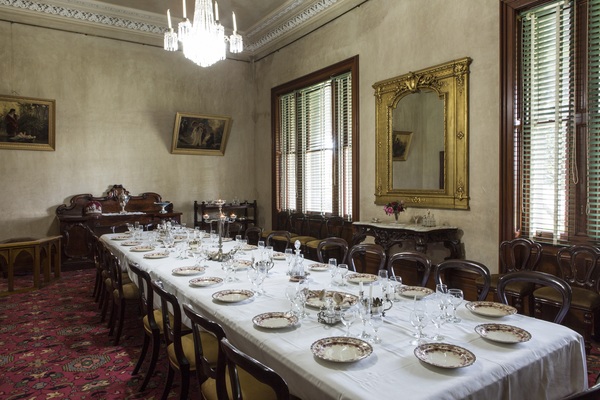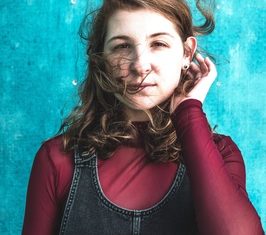From its bluestone exterior to its richly toned interior – not to mention the rabbits everywhere else – Barwon Park Mansion remains true to its intriguing heritage. LUKE VOOGT takes a tour.
Barwon Park Mansion feels “more like a home than a museum“ despite its rich history, says property manager Trudi Toyne.
For Trudi, the bluestone mansion seems still occupied by its orginal family from the 1870s.
“Only two families have lived in Barwon Park Mansion, so it’s in real original condition,” she says.
“There are not many 140-year-old properties in such good condition.”
Tourists can wander back in time at the mansion with its collection of 19th century clothes and paraphernalia.
“The wardrobes are open so people can see the fashion of the time,” Trudi says.
“You can walk into all of the rooms and have a very close look at the furniture.”
For eight years Trudi has co-ordinated the volunteers who keep the “mansion is looking as good as it possibly can”.
“Barwon Park Mansion and a lot of National Trust properties rely heavily on volunteers – they do a fantastic job,” she says.
“We have some volunteers who have been there for decades.”
One of them, Winchelsea 75-year-old Mick O’Mara, has been involved with the mansion since 1974, not long after the National Trust took over.
Mick and his wife began attending the mansion when the trust started using it to host balls in 1975.
Often he would help with maintenance jobs or run nightly check-ups with his labradors, who would “chase away the ghosts”.
After a decade-long absence Mick returned in 1985 to run tours at the mansion, which hosted his daughter’s wedding in 1991.
The property’s old dairy room and shearing shed fascinate the long-time farmer.
“They’re beautiful old relics of 100 years ago,” Mick says.
“It’s just a beautiful house and so much of it is original.”
Like Mick, Trudi is still captivated by the mansion’s architecture, which she says also impresses tourists.
“When you walk through the doors and see the beautiful staircases, stained-glass windows and lofty arches it’s just outstanding.”
“People are often surprised something as grand as this mansion is just sitting in a paddock.”
The mansion, just outside Winchelsea, remains remarkably close to its original state from 1871, Trudi says.
New downpipes and guttering, an upgraded kitchen and some indoor repairs are the only changes in nearly 150 years
“It’s a striking building, both inside and out,” Trudi says.
The mansion’s builder, English settler Thomas Austin, migrated to Victoria from Tasmania in 1837.
He staked out 32,000 acres of property, naming it Barwon Park and building a small log cabin. He went on to make his fortune breeding English sheep and exporting wool back to Europe.
When the Victorian Government began a crackdown on squatters, new laws allowed Austin to buy the land cheaply.
“They either had to give it back to the government or prove they had farmed it,” Trudi says.
“In that case they could buy it for a nominal price.”
Victorian farmers were enjoying a “boom period” at the time, Trudi explains.
“A lot of mansions were built in the western district back then but none as grand as the Barwon Park Mansion.”
Austin, who was notorious for breeding rabbits, built the mansion for a visit from Queen Victoria’s son Prince Albert.
“The Duke of Edinburgh was a keen hunter and he’d heard about Thomas Austin, Barwon Park and the rabbits,” Trudi says.
While Austin bore much of the blame for introducing the furry pests, he was also known for his contribution to early Winchelsea.
He was the first mayor of the town and helped build schoolrooms and bridges. He also helped found the Victorian Racing Club.
“The things he was involved with are still impacting on us now,” Trudi says.
Austin died just six months after finishing the mansion. Wife Elizabeth took over, channeling her significant wealth into helping those less fortunate.
Trudi believes that the mansion’s matron was inspired by the plight of her servants, such as her cook, who had developed tuberculosis.
“She helped to set up what’s now known as the Austin Hospital,” Trudi says.
Now the National Trust holds summer exhibitions at the mansion, including a display for the locally-shot film The Dressmaker which attracted 22,000 people.
“That was a fantastic chance for people to come and see the mansion,“ Trudi says.
This summer the trust will host a Nighlight exhibit, displaying the evening fashions of the ’20s and ’30s.
All proceeds will go to the trust, which Trudie says is essential for preserving Australia’s historical icons.
“If we lose these places we can’t get them back.”


